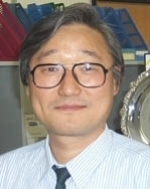research
Professor Seung-Woo Kim of the Mechanical Engineering Department, KAIST, and his research team published the result of their study on the measurement of 1 nanometer (nm) precision.
“The time-of-flight of light pulses has long been used as a direct measure of distance, but state-of-the-art measurement precision using conventional light pulses or microwaves peaks at only several hundreds of micrometers. Here, we improve the time-of-flight precision to the nanometer regime by timing femtosecond pulses through phase-locking control of the pulse repetition rate using the optical cross-correlation technique,” Professor Kim said.
According to the experiment conducted by the research team, “An Allan deviation of 117 nm in measuring a 700m distance in air at a sampling rate of 5 millisecond (ms) once the pulse repetition is phased-locked, which reduces to 7 nm as the averaging time increases to 1 second (s).”
When measuring an object located in a far distance, a laser beam is projected to the object, and the reflected light is analyzed; the light is then converted into an electric signal to calculate the distance. In so doing, Professor Kim said, the conventional method of measurement creates at least 1 mm of deviation.
He argues, “This enhanced capability is maintained at long range without periodic ambiguity, and is well suited to lidar applications. This method could also be applied to future space missions involving formation-flying satellites for synthetic aperture imaging and remote experiments related to general relativity theory."
Nature Photonics published the article online on August 8, 2010.

-
people Scientist of October: Professor Jungwon Kim
Professor Jungwon Kim from the Department of Mechanical Engineering was selected as the ‘Scientist of the Month’ for October 2020 by the Ministry of Science and ICT and the National Research Foundation of Korea. Professor Kim was recognized for his contributions to expanding the horizons of the basics of precision engineering through his research on multifunctional ultrahigh-speed, high-resolution sensors. He received 10 million KRW in prize money. Professor Kim was selected as th
2020-10-15 -
research A New Approach to 3D Holographic Displays Greatly Improves the Image Quality
With the addition of holographic diffusers or frosted glasses to wavefront modulators, KAIST researchers offer a simple and practical solution to significantly enhance the performance of 3D dynamic holographic displays by 2,600 times. The potential applications of three-dimensional (3D) digital holograms are enormous. In addition to arts and entertainment, various fields including biomedical imaging, scientific visualization, engineering design, and displays could benefit from this technolog
2017-02-01 -
research Prof. Choi Unveils Method to Improve Emission Efficiency of OLED
A KAIST research team led by Prof. Kyung-Cheol Choi of the School of Electrical Engineering & Computer Science discovered the surface plasmon-enhanced spontaneous emission based on an organic light-emitting device (OLED), a finding expected to improve OLED"s emission efficiency, KAIST authorities said on Thursday (July 9). For surface plasmon localization, silver nanoparticles were thermally deposited in a high vacuum on cathode. Since plasmons provide a strong oscillator decay channel,
2009-07-09